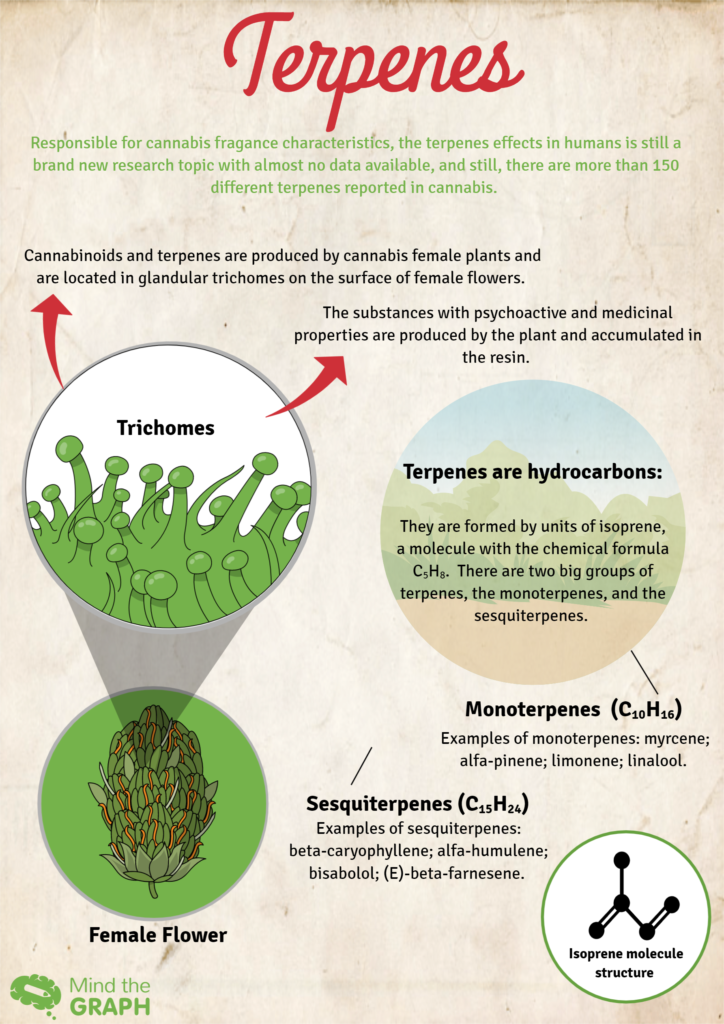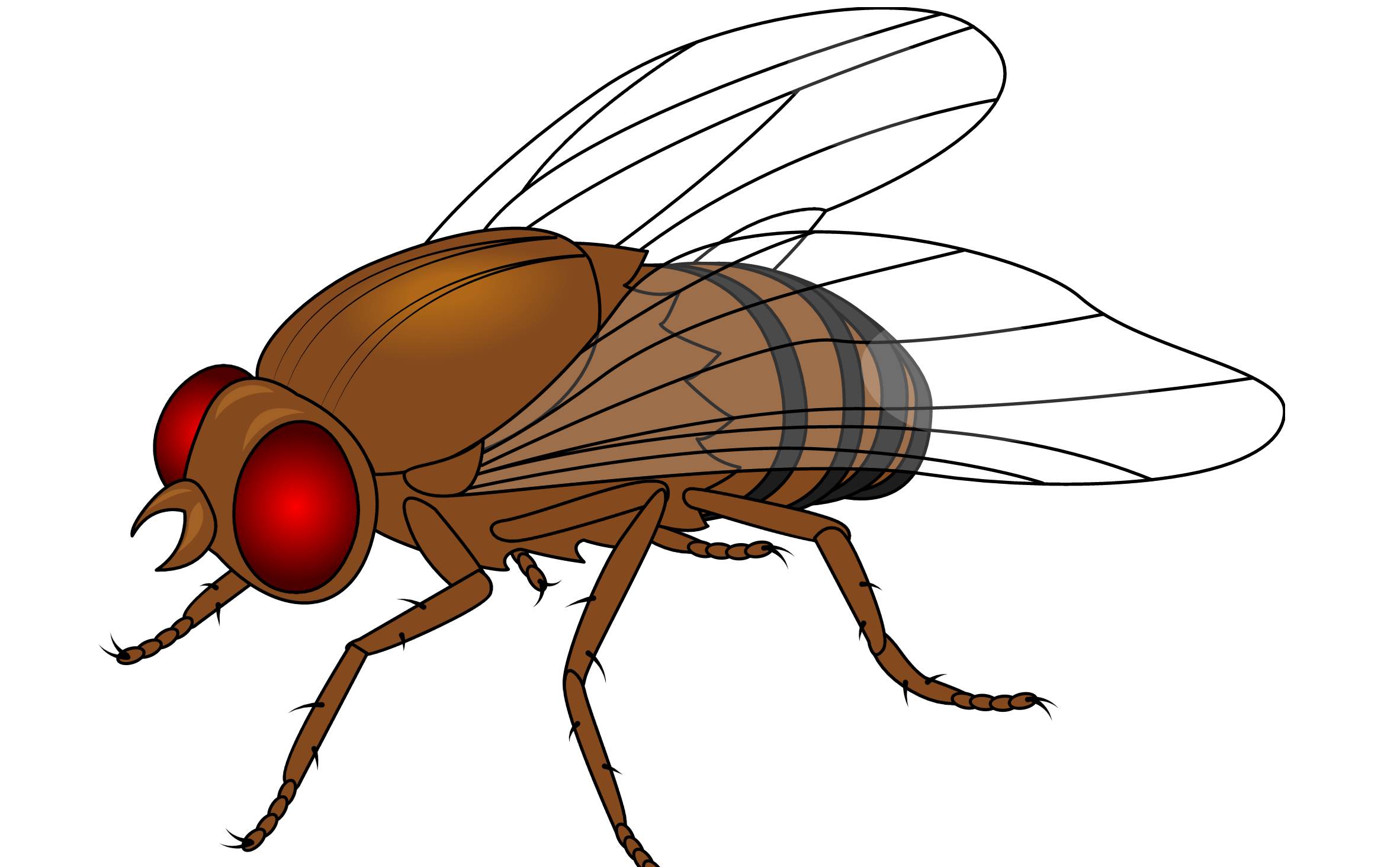The most discussed molecules today in the cannabis news are definitely, THC and CBD. And between these two cannabinoids, CBD is the winner, leaving THC in second place and all the other components of the plant behind.
Actually, we can say that from the entire spectrum of the plant, leaving apart CBD and THC, the terpenes profile are the ones coming in third place, leaving almost nothing to other cannabinoids, flavonoids, and substances present in the plant.
This means that the majority of the research available is still focused on the medicinal use of CBD and THC, and just little is left to other substances of the plant.
Nevertheless, there is a growing body of knowledge about terpenes’ profile, and apparently, they have a significant impact on the synergic effect observed on cannabis.
The terpenes are responsible for defining the plant’s fragrance, and its effects on humans are still a brand new research topic with almost no data available. Nonetheless, there is already a terpene list with more than 150 types reported.
Researchers have been trying to catalog different cannabis strains through morphological characterization and chemical composition, and studying the terpene profile is a great way to do that. These analyses allow scientists to characterize, identify, and classify the cannabis strains following the differences and similarities among their terpenes profile.
However, quantitative and qualitative analyses showed that there is not a standard terpenes profile, it varies considerably, even from the same strain.
The terpenes profile can change among cannabis strains due to genetic variation and transcriptome profile, and this last one can vary in response to environmental changes during the plant’s life.
Despite being a wind-pollinated plant which naturally contributes to the variability, how and where the plant is cultivated has extensive influence on its chemical composition, resulting in plants with different terpene profiles from the same cannabis strain.
Apart from that, we must take into account that the absence of established standards for chemicals analyzes is another factor that makes it even more difficult to deliver a complete and comparable analysis, forcing scientists to tag several components found in cannabis terpene profile as ‘unknown’.
What scientists know for sure is that each strain has its own terpene synthase gene family.
The terpene synthase gene family is the group of genes responsible for terpenes synthesis, or better, for the plant fragrance. Some genetic studies reported more than 30 different genes within the cannabis terpene synthase family, and some genes are multi-product enzymes, synthesizing multiple terpenes.
As such, each strain has its family genome, within these genes, transcriptome sequences can follow random synthesis processes, and scientists still don’t know why and how this random activity is influenced.
Furthermore, some non-enzymatic processes like oxidations, heat, or UV radiation can influence structural rearrangements of terpenes molecules, adding (again) a new level of variation to the plant profile.
Terpenes are (mostly) hydrocarbons, products of terpene synthase enzymes.
They are formed by units of isoprene, a molecule with the chemical formula C5H8.
There are two big groups of terpenes, the monoterpenes, and the sesquiterpenes.
The monoterpenes structure is formed by terpenes with two units of isoprene, while the sesquiterpenes consist of terpenes with three units of isoprene.
The terpenes formed by only two units of isoprene are the most volatile group, and for that reason, a large part is lost when the plant is dried (adding another variability level) making it difficult to get the real concentration of monoterpenes in a cannabis strain.
Three terpenes that are highly predominant among different strains are myrcene (monoterpene), β-caryophyllene, and α-humulene (sesquiterpenes).
Other important terpenes also present are α-pinene (monoterpene), bisabolol, and (E)-β-farnesene (both sesquiterpenes), limonene, and linalool (both monoterpenes).
Besides the fragrance characteristics, some studies reported terpenes having antimicrobial activities.

A study published by Industrial Crops and Products journal in 2019, was the first study to describe the antimicrobial effect of terpenes alone, and its synergic effect when combined with conventional antibiotics and antimycotics available in the market.
The study took place in Morocco using the strain cannabis sativa Maroccan, and identified 24 different chemical components belonging to the terpene profile, where 57% were sesquiterpenes, 16% monoterpenes, and 13% oxygenated sesquiterpenes.
Researchers demonstrated that the terpene profile found did not match with previous studies of the same strain, this variation was attributed to environmental factors such as geographic origin, plant age, and soil composition. The plant also exhibited moderate antimicrobial efficiency against bacteria strains, and when used in combination with antibiotics reduced the minimum inhibitory concentration from 2 to 64-fold depending on the tested microorganism.
The entourage effect affirms that cannabis components such as cannabinoids and terpenes have significant and better therapeutic effects when combined than when separated, and specifically for terpenes that is true.
Alone terpenes do not have analgesic effects, and despite some studies demonstrated that monoterpenes could block tumor formation or inhibited cell cycle progression, the concentration of monoterpenes necessary to produce the effect is extremely high.
Cannabinoids also have been shown to produce anti-tumor effects, but there is not any conclusive data claiming that cannabinoids together with terpenes produce indeed anti-tumor response.
Until today there is not a proven theory that explains the mechanism that leads to the entourage effect of cannabinoids and terpenes.
Nevertheless, along with a positive perspective, we continue to wish for more studies focused on less famous components of the cannabis plant such as the terpenes, cannabinoids, and flavonoids. These studies could give the scientific community data about the full spectrum of cannabis molecules, allowing scientists and medical professionals to have a better and complete understanding of the plant and its therapeutic possibilities.
References
Did you see the chemical structure in the infographic? We recently updated our database and now you have 110 million molecules at your disposal with just one click.
Add a chemical structure right now to your scientific picture by clicking here.

Subscribe to our newsletter
Exclusive high quality content about effective visual
communication in science.





